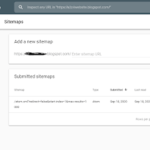
PHP is a powerful programming language for creating web pages.
WHAT IS PHP? WHAT IS PHP USED FOR?
PHP is a prevalent open-source programming language, suitable for web development and can be embedded in HTML. It is so popular because of a large number of web pages and portals are built with PHP. Open source means free to use and free for all programmers who want to use it. Embedded in HTML means that in the same file, we will combine PHP code with HTML code, following some rules.
PHP is being used to generate dynamic web pages. Remember that we call a static page the one whose contents always remain the same, while we call dynamic pages those whose content is not the same. For example, the contents may change as per changes in a database, researches or user contributions, etc.
Do you know how PHP works? The PHP language is concocted on servers, which are such powerful computers with special software and hardware. When I type an address like http://www.website.com/index.php in a web browser such as Internet Explorer, Firefox, or Chrome, what happens? The requested data is sent to the server that processes it, gathers the data (that is why we say it is a dynamic process) and what the server returns is an HTML page as if it were a static website.
The scheme is: Web page call to the server -> The server receives the request, gathers the necessary information by negotiating databases or other web pages, other servers, etc. -> The server acknowledges by sending a “normal” web page (static) but whose invention has been dynamic (making processes so that the restored web page is not always the same).
In summary:
Static Content: Request -> Response
Dynamic Pages: Request -> Processing and Preparation -> Response
On a dynamic site, the information is generally included in a database. Every minute we show the page, such as a news page, we search the latest news database that we have started to present in the visitor’s browser. Now, how do you get the surface to show new news? Load them in the database, for example, through a form that a person fills in, and that once filled out when they click “Send,” implies that what they have written is saved in our database. In this way, when we inquire about the web page and the server discusses the database, it will find this new information and will display our page differently from how it was seen previously.
As a usual rule, this type of language is usually used to create dynamic content and communicate with the user.
Let’s see an example of the content of a PHP web page, which we will have to store in a file that ends with the extension .php and that contains the text:

As you can check the file’s content, it includes HTML code and, at one point, a <? Php tag develops, which means that the PHP code works there. That is why we say that PHP code is inserted (included or embedded) in HTML code.
Therefore PHP pages contain HTML with PHP code included in them to do “something” (in this case, show Welcome to learningprogram.com. PHP code is enclosed in unique beginning and end tags:
These particular tags will allow us to enter and exit “PHP mode.” They assist the webserver in knowing that it has to understand the code combined between those tags as PHP.
What differentiates PHP from JavaScript is that the code is performed on the server, generating HTML and transferring it to the client as if it were a static web page. The client will accept the results that the server responds after interpreting the PHP code without determining what code has produced the received result. In other words, through our browser, we could see the HTML code, but never the PHP code that produced the HTML result. The web server may be configured so that users cannot tell whether you are using PHP.
What is the best thing about using PHP is that it is sincere for the beginner, but at the same time, it offers many advanced features for the professional and more advanced programmers.
With PHP, you can process information from forms, generate pages with dynamic content, or send and receive cookies, among many other things. Small web pages use PHP for large companies. Many web applications are built using PHP. We can consider Joomla and Drupal (web page content managers), osCommerce and Prestashop (online stores for electronic commerce), phpBB and SMF (forum systems for web pages), Moodle (educational platform for online education), etc.
PHP crafts include creating images from data. For example, suppose we have an association with 20 students enrolled in a computer science course, 50 students enrolled in a mathematics course, and 30 students enrolled in a chemistry course. With PHP, we can automatically create images similar to this:

PHP can also use and present results in other data standards or web development languages, such as XHTML and any other type of XML file. PHP can auto-generate these files and store them on the file system instead of displaying them on the screen, using these files to generate dynamic content. That is, dynamic content can emerge from other sites than from databases.
You can also interact with other servers using any protocol. Lastly, PHP can link with other compelling languages like Java.
In summary, PHP is a powerful language, widely used, and of great interest in web development.


